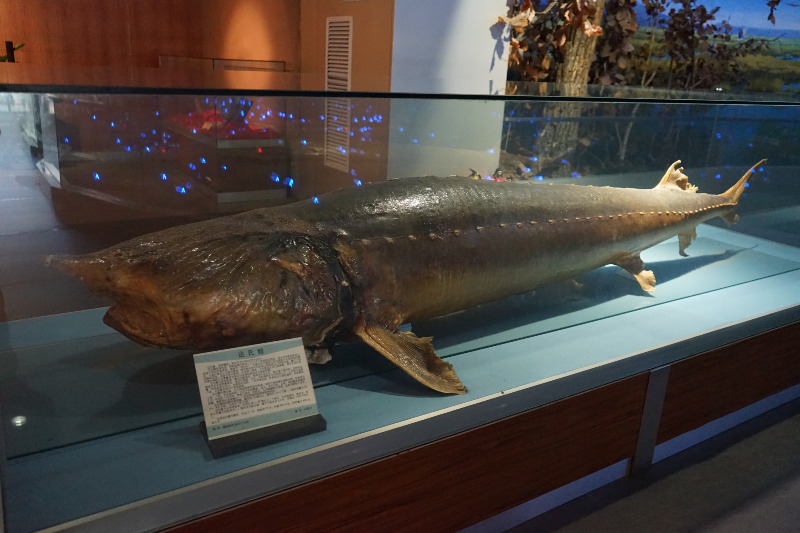About SSFP
About Us
Student Application
Subscribe to Our Newsletter
SSFP in the News
Members of Our Publishers Circle

Imagine many different species of fish all scattered around Eurasia and suddenly, all the fish swim away – and then the Kaluga Sturgeon appears. There is a lot to learn about this fish, such as its size, length, body, and whether or not it's a threat to human beings.
The Kaluga Sturgeon is a predator and one of the biggest fishes that have been discovered in Eurasia. This fish is also known for having bones instead of cartilage. Another reason the Kaluga Sturgeon is unique relates to its dinosaur-like scales, which give it a prehistoric look. Taxonomists keep questioning why this species of fish is completely harmless to humans, unlike most other fish of its size. This sturgeon actually tends to stay away from humans.
Although Kaluga Sturgeon are enormous in comparison to humans, they are peaceful creatures until they feel in danger. Their weight is what attracts fishermen the most. The Kaluga Sturgeon can weigh an incredible 2,205 pounds (1,000 kilograms), which taxonomists say is the heaviest they can get. The Kaluga Sturgeon can grow up to 18.6 Feet (5.6 meters) in length, making it the largest freshwater fish in the world. In fact, many fishermen that have caught the Kaluga Sturgeon say that they thought they were catching the King Salmon instead.
Some taxonomists were astonished to find out that this fish had a lifespan of up to more than 70 years. A famous location to find the Kaluga Sturgeon is the Amur River in Asia, however, over the course of their lives, these fish will move from freshwater to saltwater locations. Since the Kaluga sturgeon can live in fresh and saltwater, it can consume fish from both environments. As an omnivore, this fish can also eat plants.
This species is fascinating to learn about, and is a crucial member of our aquatic ecosystems. Unfortunately, the Kaluga sturgeon is in danger of becoming extinct due to pollution and overfishing, unless humans stop harming the ocean.
[Sources: ocean.org; oceanconservationscience.org]
Loading Comments...